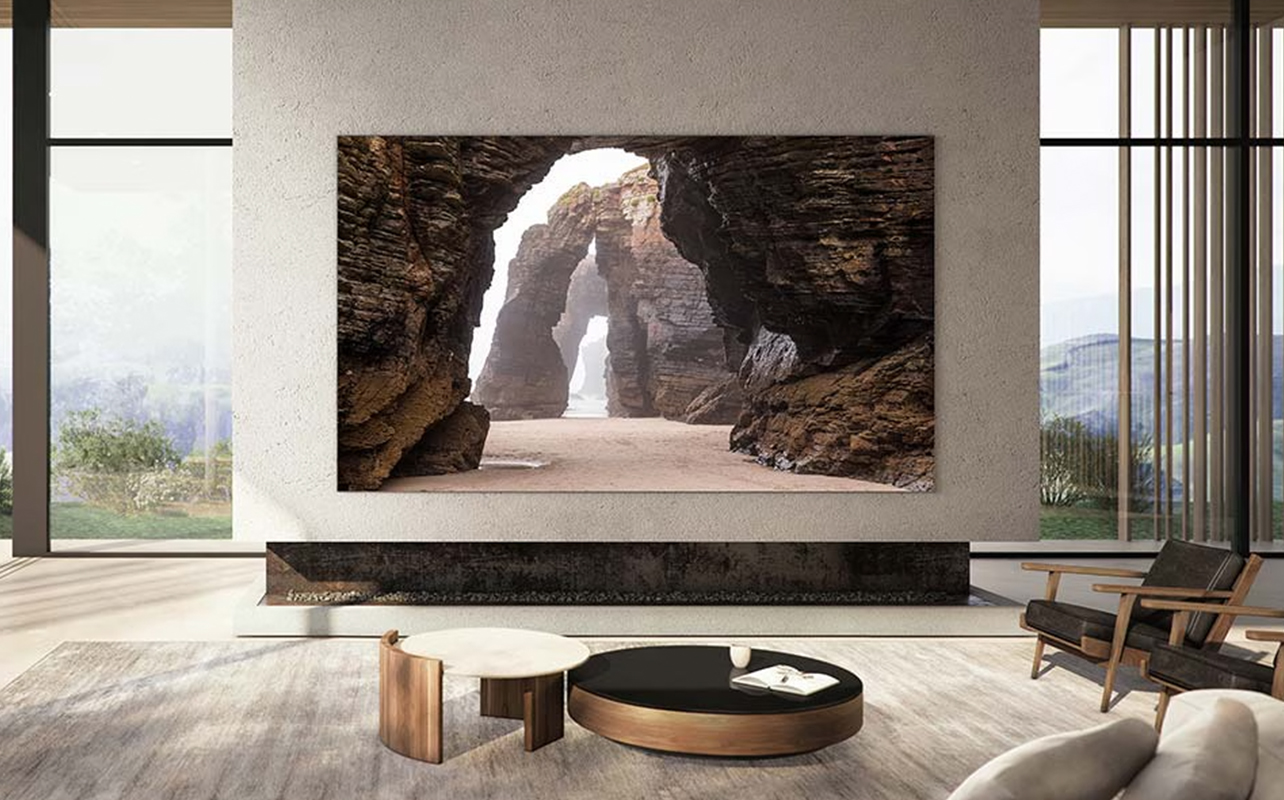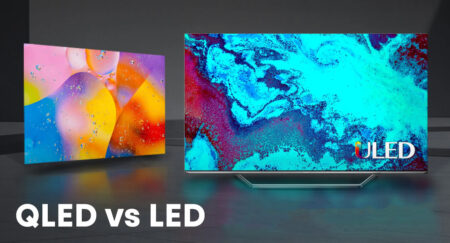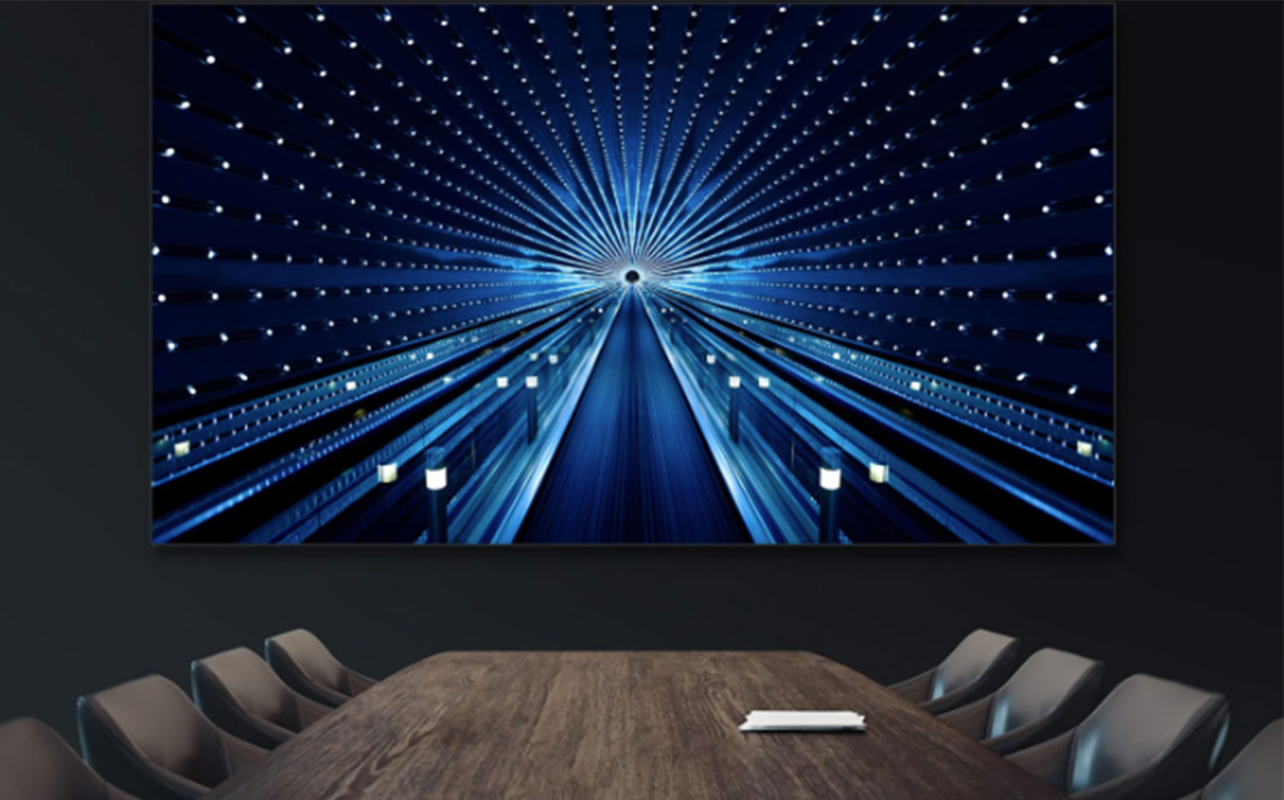
MicroLED TVs, like Samsung The Wall, are the rising star of TV display technology. With search interest climbing, home theatre enthusiast and tech fans have started to explore this emerging technology. While they hold incredible promise, it’s important to note that these TVs are not yet widely available for typical home theatre setups. If you’re interested in MicroLED TVs, understanding this new type of display now will help you make a truly future-proof choice.
In this post, we’ll cover what MicroLED is, how it enhances your viewing experience, and how it compares with OLED and Mini-LED. Let’s dive in and learn about this emerging TV technology.
What is MicroLED and how does it work?
MicroLED is a next-generation display technology that uses microscopic, self-emissive LEDs to create each individual pixel on the screen. Unlike traditional LED TVs that require a backlight, MicroLED pixels emit their own light, giving your TV screen precise control over brightness, contrast, and colour resulting in stunning picture quality.
Each MicroLED pixel contains red, green, and blue microscopic LEDs that produce their own light when powered. These LEDs are completely independent, allowing for pixel-level dimming and brightness. Since there’s no backlight, MicroLED panels deliver superior contrast and true black levels. It enables impressive brightness, wide colour gamut, and fast response times—without the risk of burn-in. The result is a visually striking image that performs well in both bright and dark viewing environments.
MicroLED vs OLED vs Mini-LED
How does MicroLED compare with Mini-LED and OLED? Mini-LED improves on traditional LED TVs with a much smaller backlight system, providing better local dimming and contrast. MicroLED is fully self-emissive like OLED, but the big difference is that MicroLED uses inorganic materials, so it has a much longer lifespan than OLED and it’s more resistant to burn-in.
Let’s break down how MicroLED stacks up against OLED and Mini-LED in terms of the following key features:
| Features | MicroLED | OLED | Mini-LED |
|---|---|---|---|
| Brightness & contrast | Extremely bright with perfect blacks; ideal for bright rooms | Perfect blacks, slightly less bright | Very bright, but blacks depend on local dimming |
| Longevity | Long lifespan (inorganic LEDs) | Shorter lifespan; risk of degradation (organic LEDs) | Long lifespan, similar to traditional LEDs |
| Burn-in | Minimal risk | Possible with static images | Very low risk |
| Energy efficiency | High, thanks to self-emissive pixels | Efficient but less than MicroLED | Moderate; backlight always on |
| Viewing angles | Wide, comparable to OLED | Excellent | Good but can be narrower |
| Price & availability | Very high price point; mostly commercial or luxury | Premium but widely available | Affordable to mid-premium |

How do LED TVs stack up against QLED?
Let’s break down the differences between these two popular TV types so you can make a smarter choice. Check out our QLED vs LED comparison to see which one fits your setup best.
Brightness & contrast
Ideal for bright rooms and daytime viewing, MicroLED delivers extreme brightness while maintaining perfect blacks. OLED excels in producing flawless blacks and cinematic contrast but can’t get as bright as MicroLED. Mini-LED is very bright, but its black levels rely on how precise its local dimming zones are.
Longevity
MicroLED boasts a long lifespan thanks to its inorganic LEDs, which resist wear over time. OLED panels can degrade more quickly, especially with heavy usage, while Mini-LED TVs enjoy longevity similar to traditional LEDs.
Burn-in
MicroLED carries minimal risk of burn-in, even with static images. OLED can develop burn-in if the same elements—like logos or news tickers—remain on screen for extended periods. Mini-LED TVs have a very low risk of burn-in due to their backlit LCD design, which doesn’t rely on self-emissive pixels.
Energy efficiency
MicroLED is highly energy efficient because each pixel emits its own light, requiring no backlight. OLED is also efficient, though slightly less so, partly due to the energy needed to maintain consistent brightness across organic materials. Mini-LED is the least efficient of the three, since its backlight is always on, even when displaying dark content.
Viewing angles
MicroLED offers wide and uniform viewing angles similar to OLED, maintaining colour and contrast wherever you’re seated in the room. Mini-LED performs well but can show some colour and brightness shifts off-centre.
Price & availability
Right now, MicroLED TVs are primarily aimed at luxury or commercial markets. OLED is a premium but widely available option, while Mini-LED is more affordable and accessible in mid-to-high-tier models.
Advantages of MicroLED technology
MicroLED comes with several advantages that make it one of the most exciting technologies on the market:
- Future-ready designs: MicroLED has the potential to enable modular walls, flexible layouts, and even transparent displays in the future. It could completely change how we think about screen design.
- True-to-life picture: MicroLED delivers incredibly accurate colour reproduction, thanks to its pixel-level control and wide colour gamut. Whether you’re watching nature documentaries or blockbuster films, you’ll see every detail in vivid, realistic tones that pop without looking oversaturated.
- Exceptional brightness and contrast: MicroLED can reach dazzling peak brightness levels that are great for daytime viewing, even in sunlit rooms. At the same time, it can turn off individual pixels to achieve true blacks, giving you a theatre-quality experience without needing to darken the room.
- Faster response times: Pixels can switch on and off almost instantly, which is a major win for sports fans and gamers. Motion looks crisp, and fast-moving action remains clear with minimal blur.
- Energy efficiency: Self-emissive pixels mean no backlight is required, which reduces power consumption. Over time, this energy efficiency can also make MicroLED a smarter choice for large displays and future portable devices.
- Longer lifespan: Built with inorganic LEDs, MicroLED panels resist burn-in and wear far better than OLED. This translates to years of consistent performance without the worry of image retention or fading colours.
Looking to level up our TV experience? Our TV buying guide walks you through the essentials, from screen sizes and display types to must-have features.
Current market and future outlook

Today, the price of MicroLED TVs is the biggest barrier for most shoppers. The consumer-ready models available right now are extremely large—from 89 inches and up—and can cost even more than a brand new car. The good news? Ongoing advances in manufacturing and production are aimed at making MicroLED more accessible. There are reports saying we’ll begin to see smaller models from top TV brands next year.
Beyond televisions, MicroLED display technology could power AR glasses, wearables, and other smaller devices. Its energy efficiency and brightness make it ideal for portable gadgets and outdoor displays.
That said, MicroLED still faces some significant hurdles:
- Manufacturing complexity: Each microscopic LED must be precisely manufactured and perfectly aligned on the panel—an intricate and time-consuming process that impacts production and cost.
- High production costs: Current assembly methods require advanced equipment and labour-intensive procedures, making MicroLED much more expensive than other display technologies.
- Scalability issues: While MicroLED works well for large displays, making smaller screens like smartphones or tablets remains technically difficult and costly.
- Repair and maintenance: Since each pixel is made up of individual micro-LEDs, diagnosing and replacing faulty ones is delicate and not yet practical for everyday consumer use.
Until these challenges are solved, MicroLED will remain an early-adopter technology with strong potential for growth.
The future is bright for MicroLED
MicroLED is a glimpse into the future of television. It combines the deep blacks of OLED, the brightness of Mini-LED, and the energy efficiency of self-emissive tech into one jaw-dropping package. It’s an emerging innovation with the potential to redefine home entertainment for everyone. Whether you’re just starting to research or planning a serious upgrade, keeping an eye on MicroLED ensures you’ll be ready to make a smart, future-proof decision.
Want to explore different types of TVs? Check out Best Buy’s TV page to discover the best fit for your home theatre today.
This article was drafted using AI technology and then reviewed, fact-checked, and revised by a member of our editorial team.





